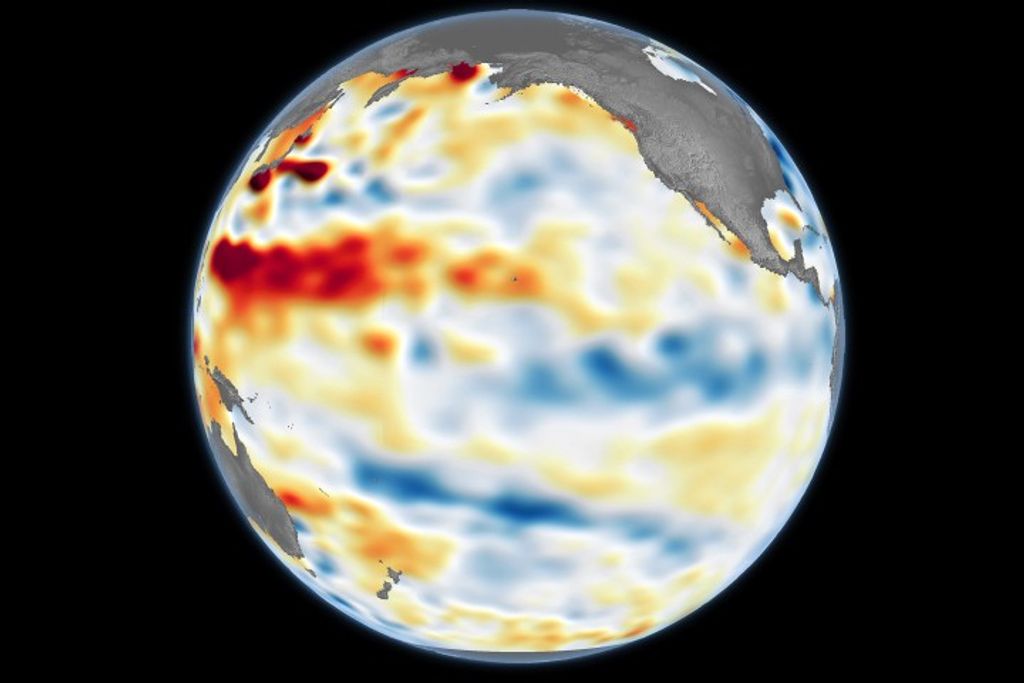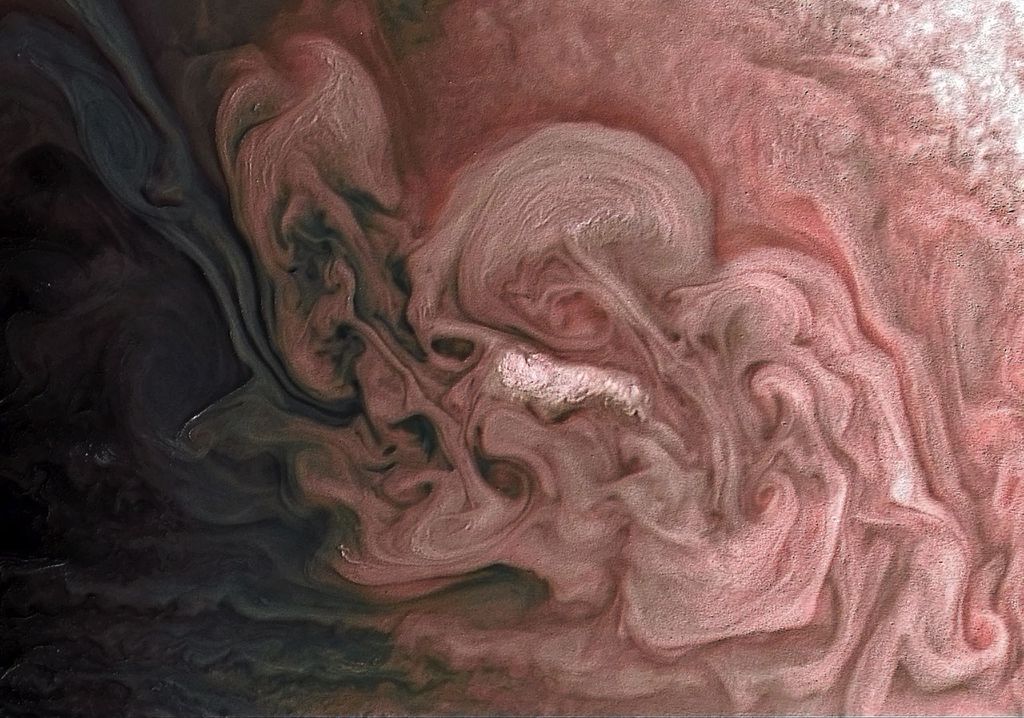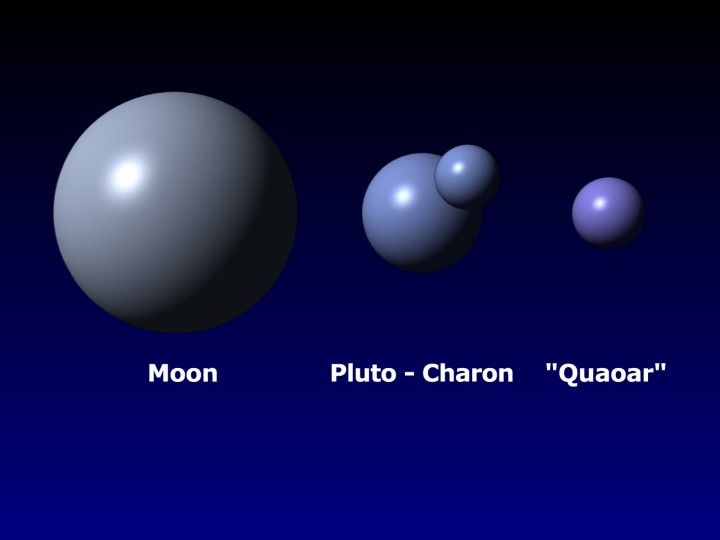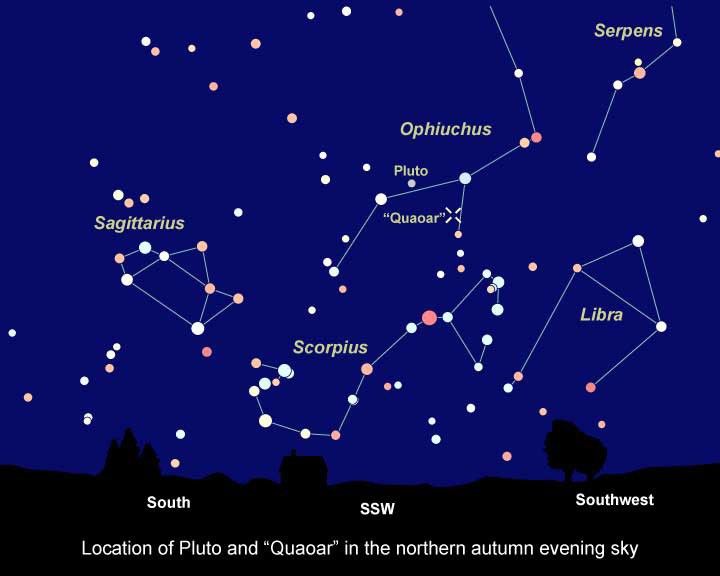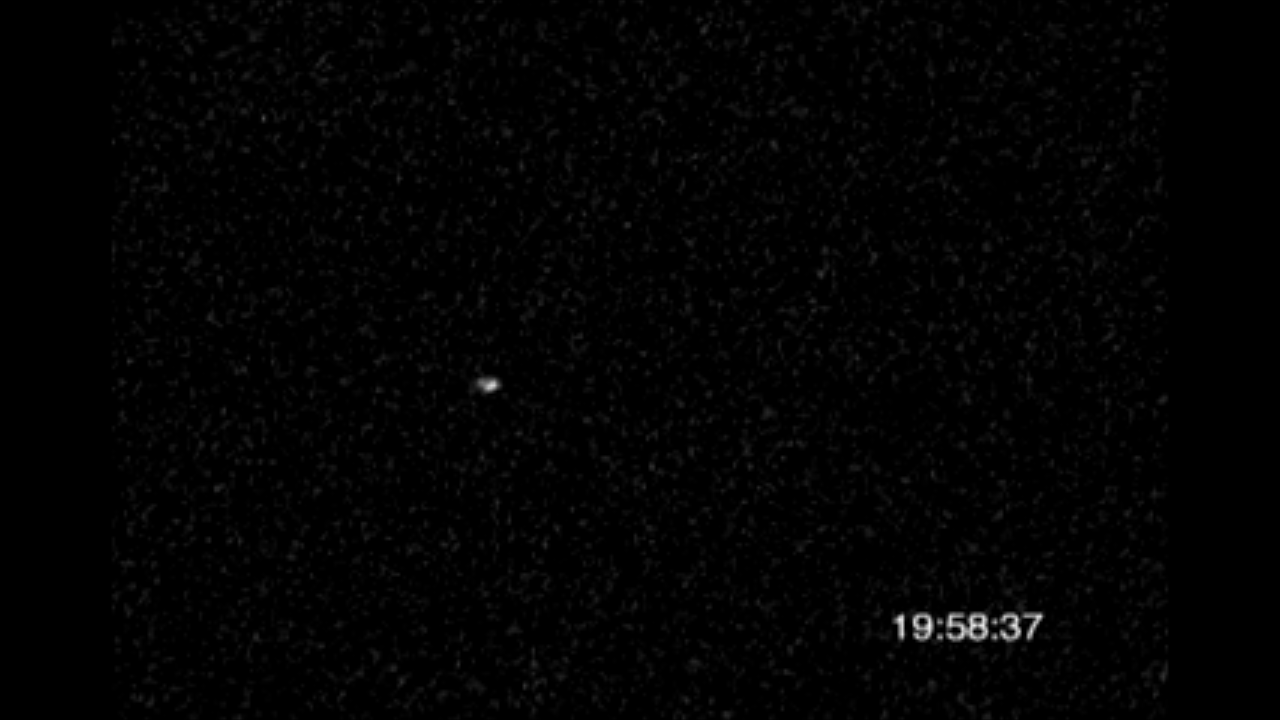1 min read
Artist’s View of Kuiper Belt Object “Quaoar”

This is an artist's impression of the icy Kuiper belt object 2002 LM60, dubbed "Quaoar" by its discoverers. With the help of NASA's Hubble Space Telescope, astronomers have determined that Quaoar (pronounced kwa-whar) is the largest body found in the solar system since the discovery of Pluto 72 years ago. Quaoar is about 800 miles (1300 kilometers) in diameter and is about half the size of Pluto. Like Pluto, Quaoar dwells in the Kuiper belt, an icy debris field of comet-like bodies extending 7 billion miles beyond Neptune's orbit. Quaoar is the farthest object in the solar system ever to be resolved by a telescope. It is about 4 billion miles (6.5 billion kilometers) from Earth, more than 1 billion miles farther than Pluto.
About the Object
- R.A. PositionR.A. PositionRight ascension – analogous to longitude – is one component of an object's position.16h 36m 18s
- Dec. PositionDec. PositionDeclination – analogous to latitude – is one component of an object's position.-14° 48' 0"
- ConstellationConstellationOne of 88 recognized regions of the celestial sphere in which the object appears.Ophiuchus
- DistanceDistanceThe physical distance from Earth to the astronomical object. Distances within our solar system are usually measured in Astronomical Units (AU). Distances between stars are usually measured in light-years. Interstellar distances can also be measured in parsecs.About 43 astronomical units (about 4 billion miles or 6.5 billion kilometers)
- DimensionsDimensionsThe physical size of the object or the apparent angle it subtends on the sky.Approximately 800 miles in diameter (about 1300 kilometers)
- Object NameObject NameA name or catalog number that astronomers use to identify an astronomical object.2002 LM60, Quaoar
- Object DescriptionObject DescriptionThe type of astronomical object.Kuiper Belt Object
- Release DateOctober 7, 2002
- Science ReleaseHubble Spots an Icy World Far Beyond Pluto
- Credit
Related Images & Videos
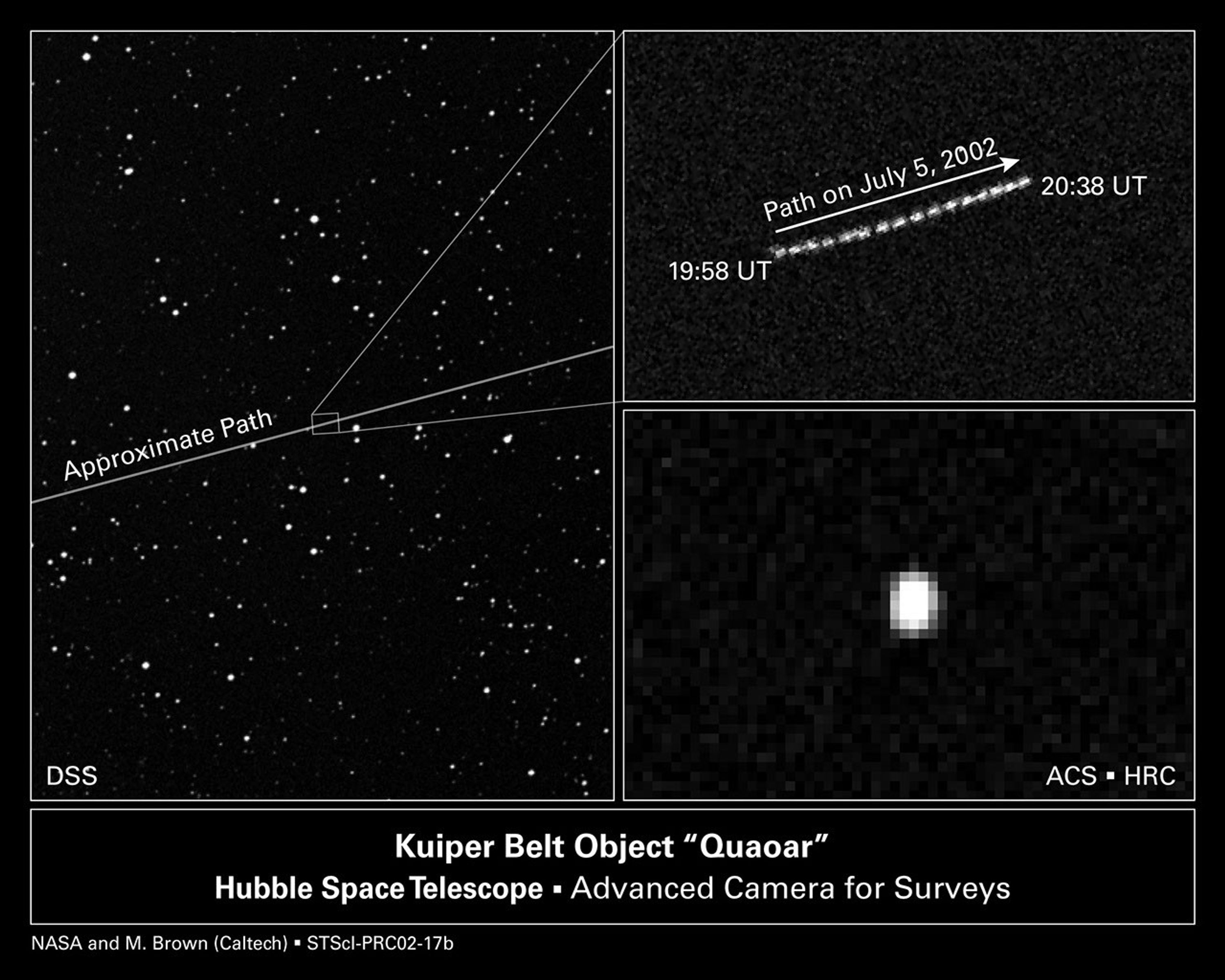
ACS Images of KBO "Quaoar"
With the help of NASA's Hubble Space Telescope, astronomers have determined that 2002 LM60, an icy Kuiper belt object dubbed "Quaoar," by its discoverers, is the largest body found in the solar system since the discovery of Pluto 72 years ago. Quaoar (pronounced kwa-whar) is...
Share
Details
Last Updated
Aug 17, 2025
Contact
Media
Claire Andreoli
NASA’s Goddard Space Flight Center
Greenbelt, Maryland
claire.andreoli@nasa.gov









